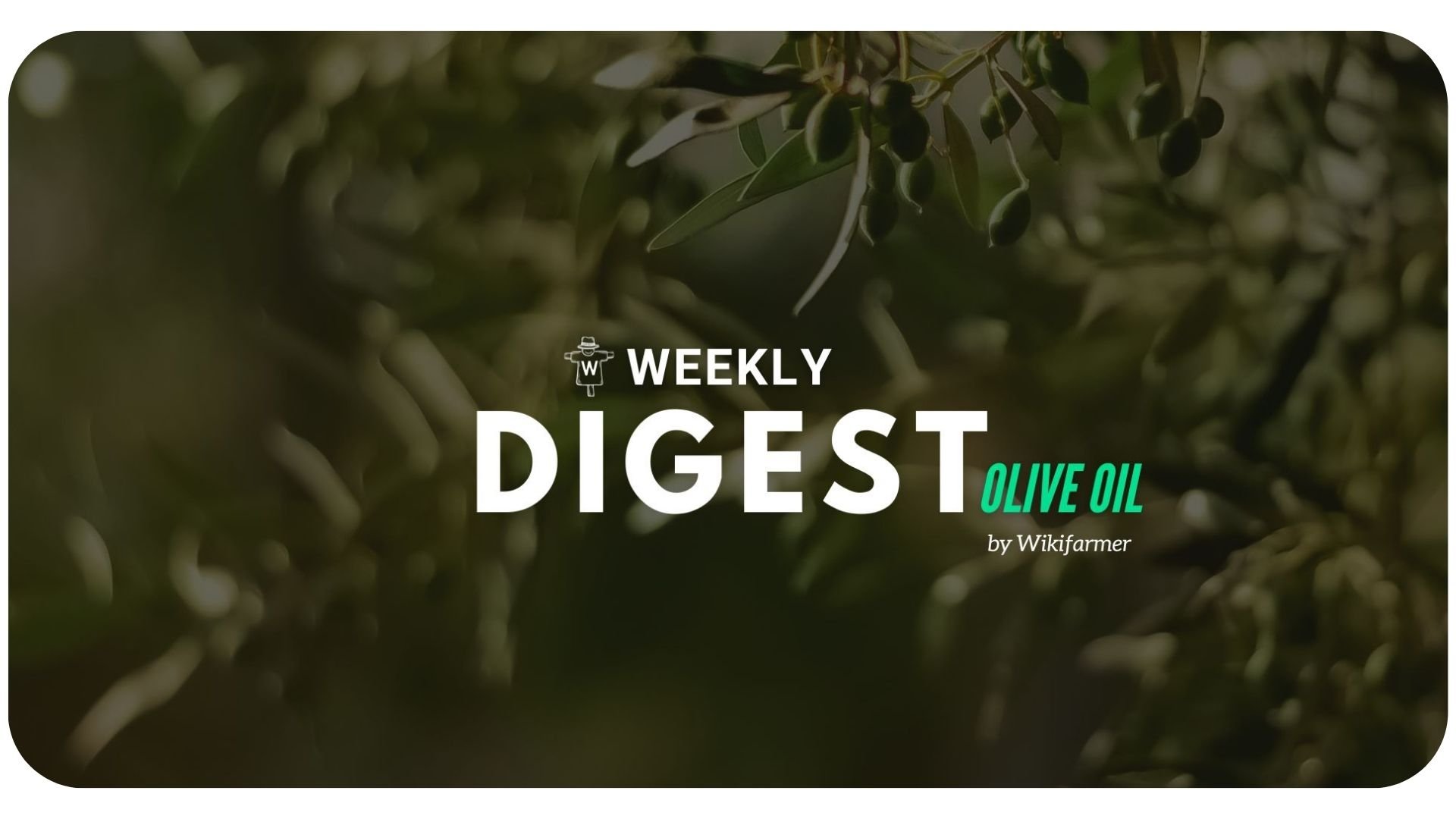Olive Oil Market Digest w1

Weekly Olive Oil Market Updates
Back from a two-week break
A lot has happened in the sector since our most recent Olive oil digest was released on December 16th. Developments span various aspects of the market affecting the product's availability and, thus, prices; revised production volume forecasts have been published, while clear trends have been established in demand coming from either end consumers or processing units.
Also, various events relevant to the sector took place in the meantime, which are some sources for insights we have already mentioned in previous reports. However, they are still important enough to discuss again now that they are in the spotlight.
Renewed Production Volumes Forecasts
The International Olive Council published a report in mid-December discussing its revised forecasts on the production outcome in various olive oil producing parts of the world. Numbers regarding to the three main producing countries in the EU are showcased in the following chart:

Greece:
Not as good as last year; apart from climate and weather factors that affected production, the problem also lies in the fact that most small and medium scale producers in the country maintain olive groves that only bear fruit once every two years.
Spain:
Even though this year is better than last year and recent rainfalls improved previous forecasts, the correction that has happened in production volumes is not enough to cover the supply gap.
Italy:
Small improvement in production in the south, but production is much smaller than in previous years.
Regarding the rest of the olive oil-producing world, the North American Olive Oil Association went on reviewing its forecasts on the global production volumes, estimating that, even though there were some regional rebounds, the total production will be lower than in the 2022/23 season.
Price Updates
The Union of Olive Oil-Producing Municipalities of Crete, PoolRed, and Ismea Mercati have shared olive oil prices at origin for the main types of olive oil in the previous weeks:

In Greece, the uptake of a positive trend in prices is evident, and it is supported by a rebound in commercial interest, coming mainly from domestic food production units. As for Italy and Spain, the significant scarcity that evoo is in and the resilience of consumer demand, which has survived no matter regional discrepancies, continues to support very high prices for the product.


As for the other kinds of olive oil, we see that, as it usually the case, their movements approximately follow the movements of EVOO prices.
Current Dangers and Opportunities for Greek Producers in the Spotlight
In a recent article, the Financial Times wrote an article showcasing the status of olive oil production in Greece currently. The piece concentrated on extraordinary events that the unusually high prices have lead some operators to, like stealing olive oil stocks.
-1.jpg?upscale=true&width=201&height=201&name=Untitled%20design%20(12)-1.jpg)
The most important aspect, however, was a fact that stood on a chronic paradox concerning the Greek olive oil sector; the fact that, although it produces some of the best produce in the world, most producers just prefer to sell it in bulk to Spanish and Italian operators that bottle it and rebrand it as domestic produce to their countries, increasing its added value and reaping significant value from their participation in the market.
This way, many features that the highly after Greek olive oil has to offer to consumers are obscured, preventing it from becoming more recognized in markets worldwide. Also, producers get paid as if they were just selling some industrial raw material, and not a unique top-quality product. As a result, instead of benefiting from the scarcity of its main competitors (meaning Spanish and Italian produce), Greek olive oil is used as a medium to retain others' dominance in the market.
Exceptional Producers Comprise an Example to Follow in the Future
Fortunately this is not the case for all Greek players; there are some, like this year's awarded "Best European Organic Olive Producer" that treat their craft not as a mere means of substinence and a source of quick profit, rather a process of continuous improvement in terms of techniques used and knowledge implemented in producing this very special product.
Current Opportunity Costs Incurred by the Greek Economy
This productive model has been the case for years in countries like Italy and Spain, and especially in the latter. Due to this, the aforementioned countries can implement promotional campaigns that showcases their domestic product in the world's most attractive markets, one of whom is the USA, the largest importer of olive oil from the EU.
Through this practice, they succeed at conquering market share which should be attributed to the unique characteristics of the Greek product, but cannot be so due to its absence from the most ludicrous market shelves worldwide.
.jpg?upscale=true&width=500&upscale=true&name=Untitled%20(300%20x%20300%20px).jpg)
Wikifarmer negotiates with several suppliers to secure a steady supply of Olive oil at reasonable prices. Our team can help you with price negotiation, pay with credit terms, and arrange logistics and transportation. We also implement strict Quality Assurance procedures, making sure that producers provide us with all certificates that prove their claims about their products, and that all relevant analyses take place.
Our contribution is not constrained just to the facilitation of value optimization for the various market players. We also invest a lot in making sure that our highly-valued partners, either from the supply or from the demand side, keep up with the latest developments in their fields.
This is why we have created Wikifarmer Academy, in order to offer affordable educational courses to all. The Wikifarmer Academy is an online school that aims to provide complete educational courses that will empower you and help you cultivate more efficiently and sustainably. In case you are interested in learning more, check our new course "Wikifarmer Expert in Sustainable Olive Oil Production, Quality, and Economics" here.
.png?width=450&height=87&name=New%20Logo%20(1).png)
